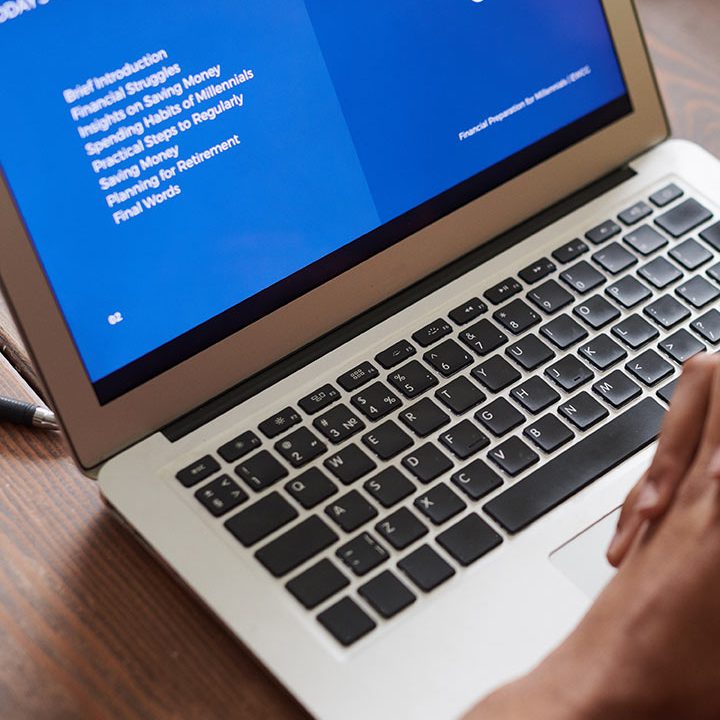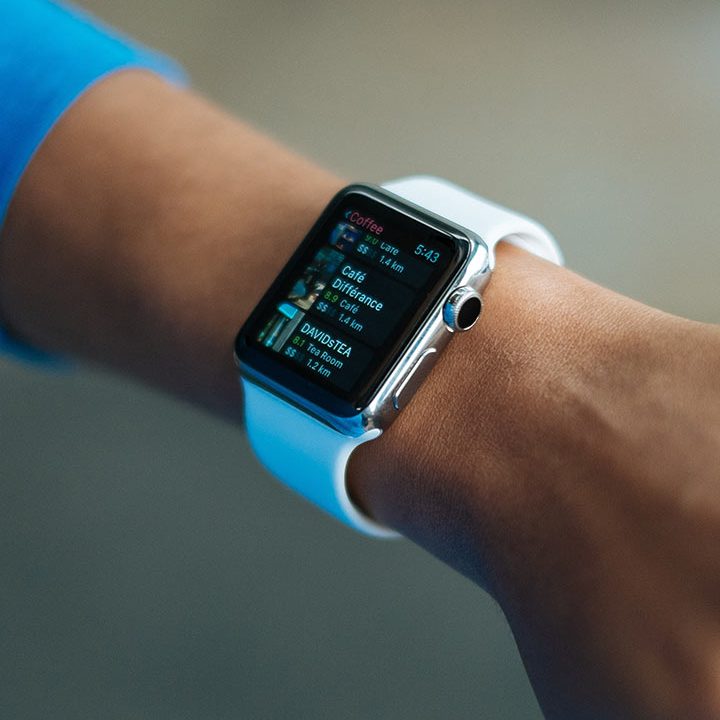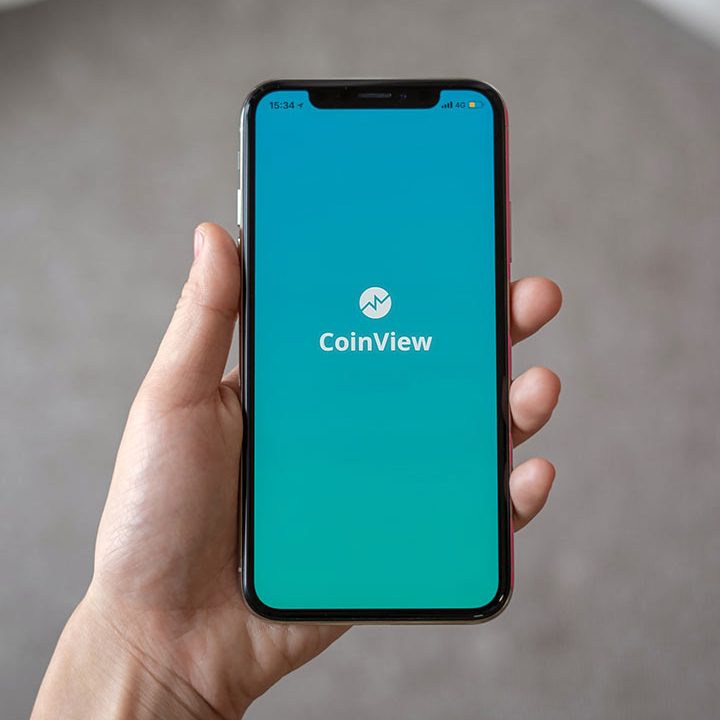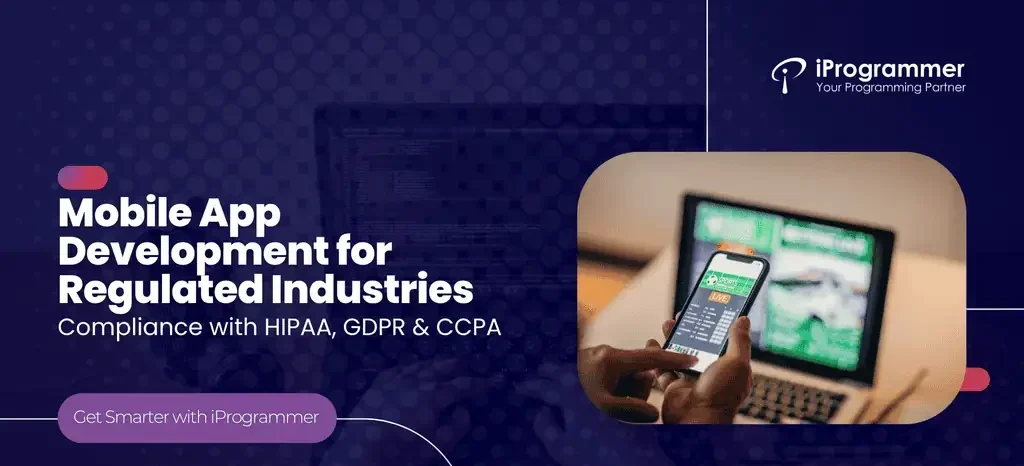Mobile App Development for Regulated Industries: Compliance with HIPAA, GDPR & CCPA
- Why Compliance Is Crucial in Mobile App Development
- Overview of Regulations Impacting Mobile Apps
- Compliance Challenges in Mobile App Development
- Best Practices for Developers Building in Regulated Contexts
- Platform-Specific Considerations
- Industry Use Cases: How Compliance Works in Practice
- How AI / Automation Can Help Ensure Compliance
- Choosing a Partner: What to Look for in a Mobile App Development Company
- Conclusion
- About iProgrammer
Do you know that 70% of healthcare data breaches are because of loss, theft, or unauthorized use of mobile devices or files? Regulators received more than $1.2 billion in fines worldwide for failure to comply with data protection rules in 2024 alone. The risks are high, and sloppy work is not an option in developing mobile applications for such regulated industries.
When you’re creating a HIPAA-compliant (Health Insurance Portability and Accountability Act) mobile application or creating software under GDPR (General Data Protection Regulation) or CCPA (Central Consumer Protection Authority) restrictions, you have a special trifecta to contend with: legal risk, user trust, and technical complexity. But executed correctly, compliance is no longer a drag, but a differentiator, one that raises your brand, mitigates risk, and fosters long-term user confidence.
This article will tell you how to do so. It will walk you through how to build a secure mobile app in regulated industries, demystify HIPAA, GDPR, CCPA, highlight common pitfalls, and offer best practices developers and product leaders can adopt.
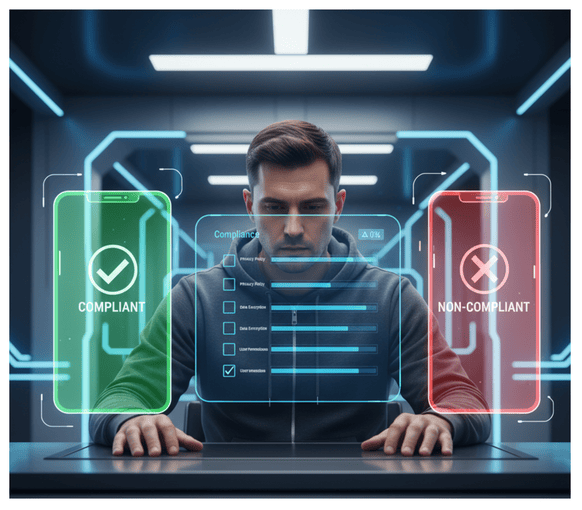
Compliance is not a regulatory box to check, it’s the basis for user trust, legal compliance, and market differentiation.
Trust and Reputation
Your users trust you with very sensitive information like medical history, financial transactions, user profiles. Even a small inference of a privacy breach will ruin customer trust forever. Any security event, no matter how small, has the potential to become a media headline, kill brand equity, and cause costly remediation.
Legal Risk and Liability
Breachment can result in fines as well as enforcement action. GDPR comes with fines up to €20 million or 4 % of global turnover, whichever is greater. CCPA has statutory damages, litigation, and attorney’s fees. HIPAA violations can lead to civil and criminal penalties depending upon intent and severity. Compliance is not voluntary, it’s the law.
User Retention and Competitive Advantage
In a crowded app marketplace, being able to say “we’re a HIPAA compliant mobile app” or “GDPR Compliant Mobile App” is a trust signal. For enterprise buyers and B2B customers, regulatory assurance is often non-negotiable. A compliance-first posture can be a key selling point.
Understanding the key regulations that inform mobile app development is the first step towards creating secure, compliant, and trusted applications
HIPAA — Healthcare & Health Data
HIPAA has regulations that cover handling of Protected Health Information (PHI). An application program that stores, transmits, or receives PHI must comply with the Privacy Rule, Security Rule, and Breach Notification Rule. You will need to have confidentiality, integrity, availability, and risk analysis, and administrative, physical, and technical safeguards.
- Covered entities (health providers, insurers) and business associates (technology vendors).
- You are required to implement Business Associate Agreements (BAAs) and assign roles and responsibilities.
- Encryption (transit and rest), audit controls, workforce training, incident response planning are essential.
A HIPAA compliant mobile app must encompass all these safeguards, or the app is on risky, noncompliant ground.
GDPR — European Data Protection
The EU GDPR regulates “personal data” of EU residents, regardless of where your servers reside. For mobile apps, GDPR requires:
- Lawful basis for processing (consent, legitimate interest, contract, etc.).
- Transparency, data subject rights (access, erasure, portability, objection).
- Data minimization, storage limitation, accuracy.
- Privacy by Design & Default, DPIAs (Data Protection Impact Assessments), breach notification in 72 hours.
- Cross-border transfers that are adequate, Standard Contractual Clauses, or binding corporate rules.
A GDPR compliant mobile app must bake these requirements from day one.
CCPA — California Consumer Privacy Act
CCPA provides California residents’ rights on their personal data: know, erase, opt-out of sale, non-discrimination, portability. They apply to companies over thresholds (revenue, volume of data, etc.).
- Must have a “Do Not Sell My Personal Information” button or link
- Offer disclosure at or prior to data collection.
- Respect opt-out and erasure requests.
- Enforce verification processes to exclude scammers.
- Be careful when combining mobile identifiers and behavioural data.
A CCPA compliant app allows you to respect those rights without compromising core functionality.
ADA Compliance: ADA compliance covers accessibility, whereas HIPAA, GDPR, and CCPA cover data privacy. U.S. public-serving mobile apps—healthcare and finance apps being prime examples—need to be accessible (WCAG 2.1) to enable easy accessibility for people with disabilities. It is not only the good thing to do but also supports further, more complete regulatory alignment.
Compliance Challenges in Mobile App Development
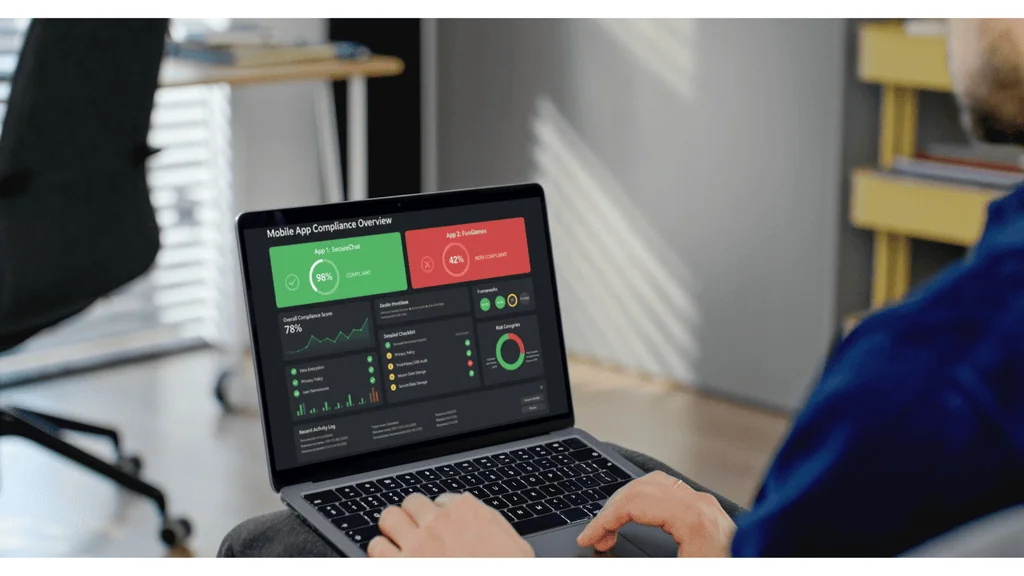
Even experienced teams fall into traps while developing in regulated environments. Following are typical challenges:
Secure Data Storage & Encryption
- On-device storage of user data in local databases or file caches is dangerous if not encrypted.
- It is difficult to manage keys—encoding keys or secrets in code is insecure.
- Back-end databases need to also implement encryption at rest.
- In-transit channels (API, web requests) need to implement TLS with robust cipher suites.
Consent Management & User Control
- Users must be able to grant, refuse, or revoke consent granularity (e.g. analytics, marketing, core function).
- You must store user preference history (who opted in/out & when).
- Consent UI cannot be buried—must be clear, unambiguous, and context-aware.
Cross-Border Data Flow & Localization
- If your mobile app servers are in the U.S. but you have EU users, cross-border transfer rules apply (GDPR).
- Local data residency rules might require some data to remain within region.
- Data replication, caching, CDN networks need to obey jurisdiction boundaries.
Third-Party Integrations & APIs
- SDKs or analytics libraries may unwittingly capture personal data or breach compliance.
- Every third-party needs to be evaluated, and obligations need to be expressed in contracts (e.g. data processing addenda).
- API endpoints need to be secured against injection, DDoS, parameter tampering.
Authentication, Session Management & Identity
- Session tokens need to be ephemeral, securely stored (not in insecure storage), use refresh tokens judiciously.
- Multi-factor authentication (MFA) or biometric choices might be mandatory for sensitive apps.
- Role-based access control should be enforced uniformly for front-end & back-end.
Auditing, Logging & Monitoring
- Immutable logs of access, changes, errors, failed logins are a must.
- Log data must be secured and not bypass privacy controls.
- Real-time detection or breach reporting should be implemented.
Having all these together at once can be too much for a developer team with no prior compliance experience.
Following is a playbook to make compliance a design benefit instead of a feared checklist. Every point map to several regulations.
End-to-End Encryption
- Use E2EE (end-to-end encryption) for the most personal user data or communication—decryption keys are held only by the endpoints.
- For less significant flows, apply strong TLS with certificate pinning.
- Use forward secrecy (e.g. ephemeral keys) to prevent retrospective decryption.
Role-Based Access Control (RBAC) & Principle of Least Privilege
- Define user roles (admin, clinician, user, auditor) with closely limited capabilities.
- Apply authorization checks client-side and server-side (never trust client).
- Partition administrative UIs behind extra layers (VPN, MFA, IP whitelisting).
Secure APIs & Contract Enforcement
- Use input validation, parameter validation, rate limiting, sanitizing.
- Enforce firm API contracts (e.g. openAPI specs) and enforcement on schema automatically.
- Secure endpoints through WAF, API gateways, token introspection.
Threat Modelling & Static / Dynamic Analysis
- Day Zero, arrange threat modelling workshops to find data flows, assets, vulnerabilities.
- Static code analysis, dependency scanning, OWASP Mobile Top 10 testing.
- Round-the-clock repeated dynamic testing (fuzzing, penetration testing) for runtime bug discovery.
Regular Audits, Penetration Tests & Compliance Reviews
- Conduct HIPAA, GDPR, or CCPA audits by independent third-party auditors.
- Schedule regular privacy impact assessments (PIAs) and DPIAs.
- Re-assert compliance at major revisions instead of relying on previous certification to include new functionality.
Consent Frameworks & Just-in-Time Prompts
- Instead of burying consent under Settings, prompt users contextually when a feature is first invoked.
- Use modular, layered consent UIs (core vs optional).
- Maintain a consent ledger with timestamps and versioning.
- On revocation, gracefully degrade or disable features.
Data Minimization, Anonymization & Pseudonymization
- Do not gather data unless absolutely essential.
- Wherever feasible, save only pseudonymized or anonymized identifiers rather than PII.
- Use tokenization for references to underlying sensitive data.
Best practices are general, but various app architectures and mobile platforms call for tuning, particularly within a regulated environment.
Android App Security
- Store cryptographic keys using Android Keystore System instead of hardcoded secrets.
- Take advantage of SafetyNet / Play Integrity APIs to identify rooted or compromised devices.
- Enforce Network Security Configuration to restrict allowed TLS configurations.
- Use proguard / R8 obfuscation to prevent reverse-engineering of core logic.
- Store only encrypted preferences or use secure storage libraries (e.g. SQLCipher).
iOS App Security
- Employ the iOS Keychain for credentials and secure tokens.
- Utilize App Transport Security (ATS) to impose TLS.
- Employ biometric APIs (Face ID, Touch ID) as voluntary multi-factor layers.
- Avoid writing sensitive caches to file system; opt for Data Protection classes (NSFileProtection).
- Use hardened runtime, code signing, and integrity checks.
Hybrid Mobile App Security
- Frameworks like React Native, Ionic, Flutter need extra scrutiny.
- Do not expose sensitive logic in JavaScript layer; push critical operations to native modules.
- Use bridge-level encryption for communication.
- Validate permissions, sanitize webview inputs, prevent injection.
- Periodically update underlying frameworks and plugins to close vulnerability holes.
Compliance with hybrid mobile app security best practices is a step to ensure that you don’t sacrifice control merely because you have chosen cross-platform efficiencies.
Seeing compliance in action makes the rules tangible. Here’s how HIPAA, GDPR, and CCPA inform real-world mobile applications in industries.
Healthcare & Telemedicine (HIPAA Compliant Mobile App)
Consider a telehealth app that allows users to upload lab reports, communicate with doctors, book appointments, and get prescriptions. Every piece of data is PHI. To comply:
- Data stored on device is encrypted; no unencrypted cache persists.
- Backend implements RBAC: patients, clinicians, admins have distinct rights.
- Audit logs capture who accessed what file and when.
- BAAs signed with cloud providers and vendor services.
- Incident response plan ensures breach notification within required windows.
As a result, the app can legitimately claim “HIPAA Compliant Mobile App” status, reassuring patients and buyer organizations.
FinTech / Banking (GDPR Compliant Mobile App)
A European neo-bank wants to build mobile access to accounts, payments, budgeting. Under GDPR:
- Consent is collected for analytics, marketing; core banking functions use ‘contract’ basis.
- Users can request account deletion, portability, or block data usage.
- Data is stored in EU regions; cross-border transfers rely on SCCs.
- DPIA is conducted due to high-risk processing (financial profiling).
- Logging and breach notification compliance built in.
The app can advertise as a GDPR compliant mobile app, which is critical to user trust in Europe.
Retail / Consumer Apps in California (CCPA Compliant Mobile App)
A shopping app collects browsing habits, push notification preferences, in-app identifiers, etc. For Californian users:
- The app includes a “Do Not Sell My Personal Information” link / toggle.
- Users may request deletion or see what data is collected.
- Users are not discriminated (e.g. price changing) based on exercising rights.
- Backend supports selective deletion while maintaining analytics sanity.
Appropriately built, this becomes a CCPA compliant mobile app—an assurance to California consumers (and a safe harbour from regulatory scrutiny).
Cross-Industry Overlap
A health & wellness app with nutrition, medical, and financial tie-ins might need to satisfy HIPAA, GDPR, and CCPA simultaneously. The architecture must be modular, with compliance layers respecting the strictest rule set and toggling features per region. That’s where a Mobile App Development Company with compliance domain experience adds massive value.
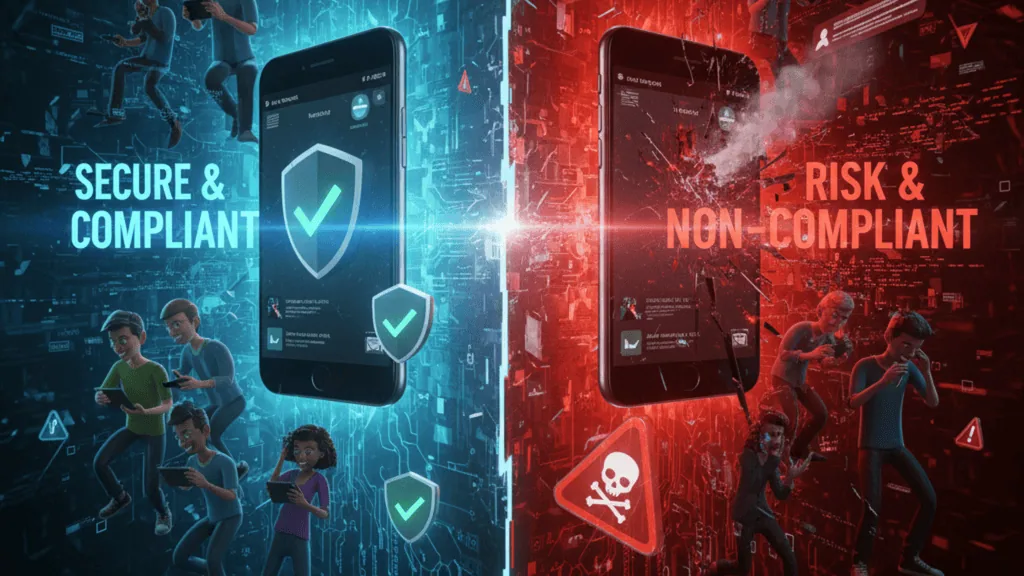
Manual controls can fatigue or fail. Smart automation makes compliance sustainable.
Auto-Logging & Immutable Audit Trails: AI agents and logging pipelines can automatically capture events (access, changes, consent toggles) with tamper-proof chains. This aids forensic analysis and regulatory proof.
Anomaly Detection & Breach Alerts: Machine learning models can flag unusual patterns—bulk downloads, off-hours access, exfiltration attempts. Real-time alerts help containment.
Automated Consent / Preference Management: Rule engines can enforce consent changes automatically across modules. If a user opts out of analytics, dependent functions are disabled in real time.
Policy Enforcement & Automated Scanning: AI / DevOps pipelines can scan for GDPR, CCPA, HIPAA violations in code or configuration and reject deployments. This “shift-left” approach keeps compliance continuous.
Through the alignment of human strategy and AI automation, you can transition from reactive compliance to proactive governance.
Your development partner is not simply a coder; they need to be a compliance co-pilot.
Evidence of Compliance Experience: Ask for case studies of HIPAA compliant mobile app projects, GDPR audits, or CCPA–compliant consumer apps. See how they navigated regulatory reviews.
Security-First Culture: The team should have security champions, run threat modelling by default, and mandate code reviews and pentests.
Certifications & Audits: Look for ISO 27001, SOC 2, HITRUST, or third-party audit reports. These demonstrate maturity and process discipline.
Ongoing Support & Governance: Regulations evolve. You need partners who offer maintenance, compliance updates, monitoring, governance beyond launch.
Transparent Process & Documentation: You should get design docs, data flow diagrams, DPIAs, privacy impact assessments as deliverables—not afterthoughts.
When you select a partner based on these pillars, you’re not just outsourcing development; you’re forging a compliance-aligned alliance.
In regulated industries, compliance-first mobile app development is not a box to check—it’s a competitive advantage. When you commit to building a HIPAA compliant mobile app, a GDPR compliant mobile app, or a CCPA compliant mobile app, you are telling users: we take privacy, security, and your trust seriously. And for enterprise clients, that message carries weight.
By embedding practices such as end-to-end encryption, RBAC, secure APIs, thoughtful consent frameworks, regular audits, and leveraging AI for automation, you build not only a secure product but a sustainable foundation for growth.
iProgrammer Solutions is a trusted mobile app development company known for building secure, compliant, and high-performing apps for regulated industries. Our expert mobile app developers deliver HIPAA, GDPR, and CCPA compliant mobile apps that align with global privacy standards and business goals alike.
With deep expertise in secure mobile app development and security in mobile application development, we ensure every product is built with encryption, access control, and audit readiness at its core. Compliance isn’t an add-on—it’s our foundation. Learn more about our mobile app development services.




